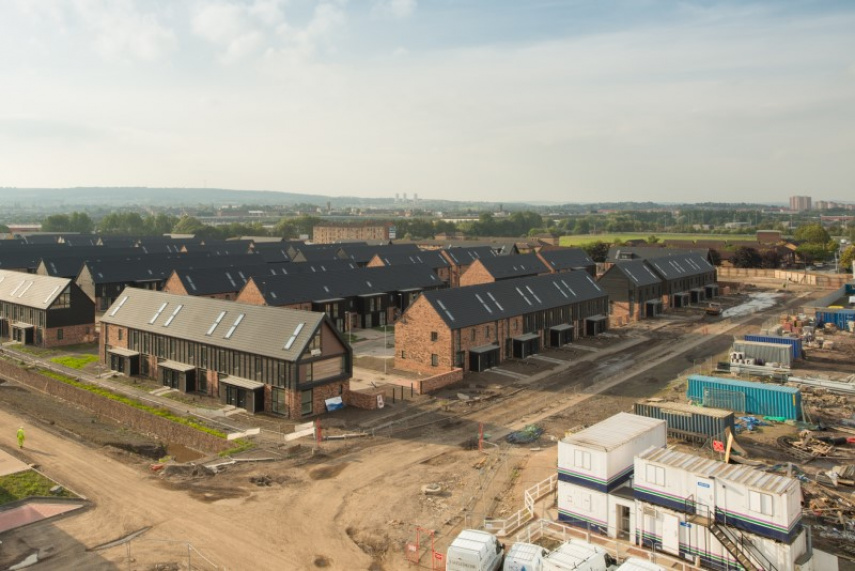
Land for Housing – Time for change?
David Stewart
Concerns that Scotland’s housing land market and approach to development does not meet our needs have been amplified by the public health and economic crisis we are facing. The changes to the way we live caused by COVID-19 have led many of us to reflect on the space we live and the place around us. As Professor Moira Munro pointed out in Life Under Lockdown: Our Complex and Varied Relationship with "Home", different households will have very different experiences of lockdown.
There is a danger that the pandemic will deepen inequalities – recovery from the last financial crisis saw a tightening on mortgage lending, resulting in many people being housed in the private rented sector who would previously have bought a home. Robert Black, the former Auditor General, stated that this led to a generational gulf between housing ‘haves’ and ‘have nots.’
The development of new homes and places can play a significant role in the post-pandemic recovery, providing an opportunity to promote inclusive growth and a greener and fairer economy. Development of housing on vacant and derelict land can regenerate communities, while new housing developments can deliver energy efficient homes and support active travel.
These issues will be at the forefront of our thinking as the Commission moves on to the final stages of our review of land for housing and development. The review focuses on the importance of well-planned sustainable communities in places people want to live at prices they can afford.
Our work starts from the evidence that fundamental change is required to the way land is delivered for housing if we are to achieve the housing outcomes that Scotland needs. The objective of this work is to ascertain how land for housing and development is identified and brought forward can be altered to help deliver better homes and better places. It builds on previous work by the Commission on land value uplift capture and public interest led development set out in Advice to Ministers on Land Value Capture. In this advice the Commission highlighted the need for a move to a more plan led approach to development with the public sector taking a more pro-active role in initiating and driving forward development
The review begins with two pieces of research looking at land for private housing development, the main way that housing is delivered in Scotland.
A study by the University of Reading examined the relationship between residential development land prices and house prices. While the research found that the relationship is not straightforward, it did find that the price of development land can influence the price of new-build housing. This is significant as it is often argued that the price of new homes is determined solely by existing house prices.
Chamberlain Walker Economics carried out an Investigation into Land Banking in Scotland. They found that where there is no evidence of developers land banking sites with planning permission – developers do maintain a supply of land to operate their businesses and to manage uncertainty in the system. There is a need however, to look at land further back in the system (land without planning permission likely to be developed for housing in the future) and the use of option agreements for future development of these sites. A lack of transparency over who holds options on land for development makes it difficult to assess whether there are constraints on land supply limiting housing development. The report found a need for greater clarity on who holds options to develop land across Scotland.
The significant finding of these two pieces of work is that the speculative private development model in Scotland is not suited to either increasing the supply of new homes or to making homes more affordable.
This is not a criticism of housebuilders, who behave rationally to maintain their businesses, but it does make clear that if we want the housing outcomes that Scotland needs then there has to be fundamental reform to the way that we deliver land for housing. There is also a need for more diversity in the organisations involved in delivering housing in Scotland. Identifying what these new delivery models might look like and how they could best be supported is an important focus for our future work in this area
We will be looking at how the system can and should change to deliver better results. A series of research has been commissioned to help develop thinking on this and inform our recommendations for change:
The Value of Early Engagement in Planning – This research, by Nick Wright and Steven Tolson has found that there were significant benefits to getting communities involved earlier in decision making, achieving better outcomes and less friction between the communities and developers. A blog will be out in the next few days looking in more detail at the report (summarised here) and there is a webinar taking place to explore the findings.
Land and Rural Housing – This research investigates options to ensure that sufficient affordable land for housing is available in the right places to meet housing need and demand in rural communities. It follows previous work by the Commission on the impacts of concentration of land ownership, which found evidence that in some cases, the concentration of rural land ownership can be the constraint to releasing land for housing in a way that enables delivery. The Commission’s proposals for a statutory Land Rights and Responsibilities Review, together with more proactive use of existing compulsory purchase powers offer targeted ways to address those cases where more collaborative approaches are not effective. The research looks at support for communities to develop housing and highlights examples of successful collaboration. This research will be published next month and includes five case studies looking at different models and approaches to housing in rural communities.
Housing and Placemaking in Europe – This study will investigate the role of housing land allocation and land assembly in European countries that have a strong record on placemaking and affordable housing. We will look at the learnings from European countries and see what and how can be applied to Scotland.
We are engaging widely with stakeholders to identify land-related challenges to delivering better places and more affordable homes and to highlight good practice. We will publish case studies from around Scotland in partnership with CaCHE, the UK Centre for Collaborative Housing Evidence, which have been identified as positive examples of good practice that can help shape thinking in this area.
For each of these projects, gaining insight from people involved in development and placemaking – landowners, communities, housing associations, planners and developers – will be essential. We will provide opportunities for engagement both during research and after work is published. The CaCHE stakeholder hub is also providing guidance and feedback for our work over the year.
We are going to bring together the key findings from all of this research in advice to the Scottish Government in January 2021. Recommendations will focus on reforming the way land is brought forward for housing so that Scotland delivers places people want to live at prices they can afford.
We want to hear ideas, challenges faced and examples of innovation in delivering housing that will help contribute to our work. If you would like to get involved please contact David.Stewart@landcommission.gov.scot or tweet us @ScottishLandCom #landforhousing
